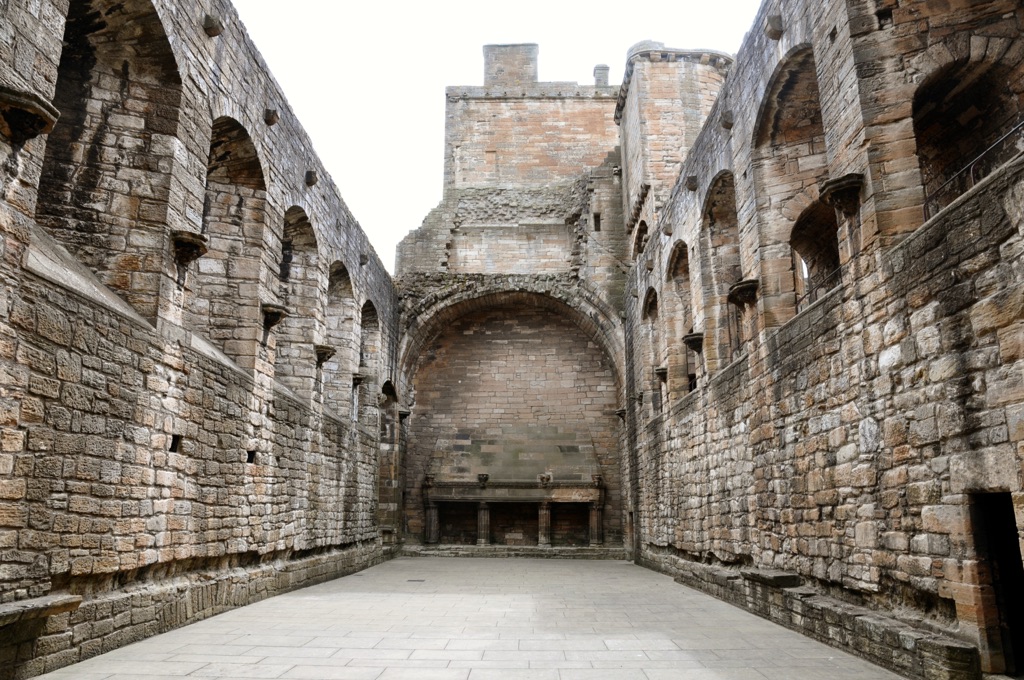Linlithgow Palace, nestled in the town of Linlithgow in West Lothian, Scotland, stands as a testament to Scottish history and architecture. This majestic ruin was once a principal residence of the monarchs of Scotland in the 15th and 16th centuries. Its strategic location, halfway between Edinburgh Castle and Stirling Castle, made it a convenient stopover for royals. The palace witnessed significant events, including the birth of Mary, Queen of Scots. Despite its ruinous state, Linlithgow Palace remains a symbol of Scotland’s rich past and attracts visitors from around the globe.
Get your dose of History via Email
Historical Background of Linlithgow Palace
Linlithgow Palace’s origins trace back to a royal manor existing on the site in the 12th century. King Edward I of England used it as a military base during his invasion of Scotland. The transformation into a palace began under King James I of Scotland in the early 15th century. It became a favorite residence for the Stewart kings and queens.
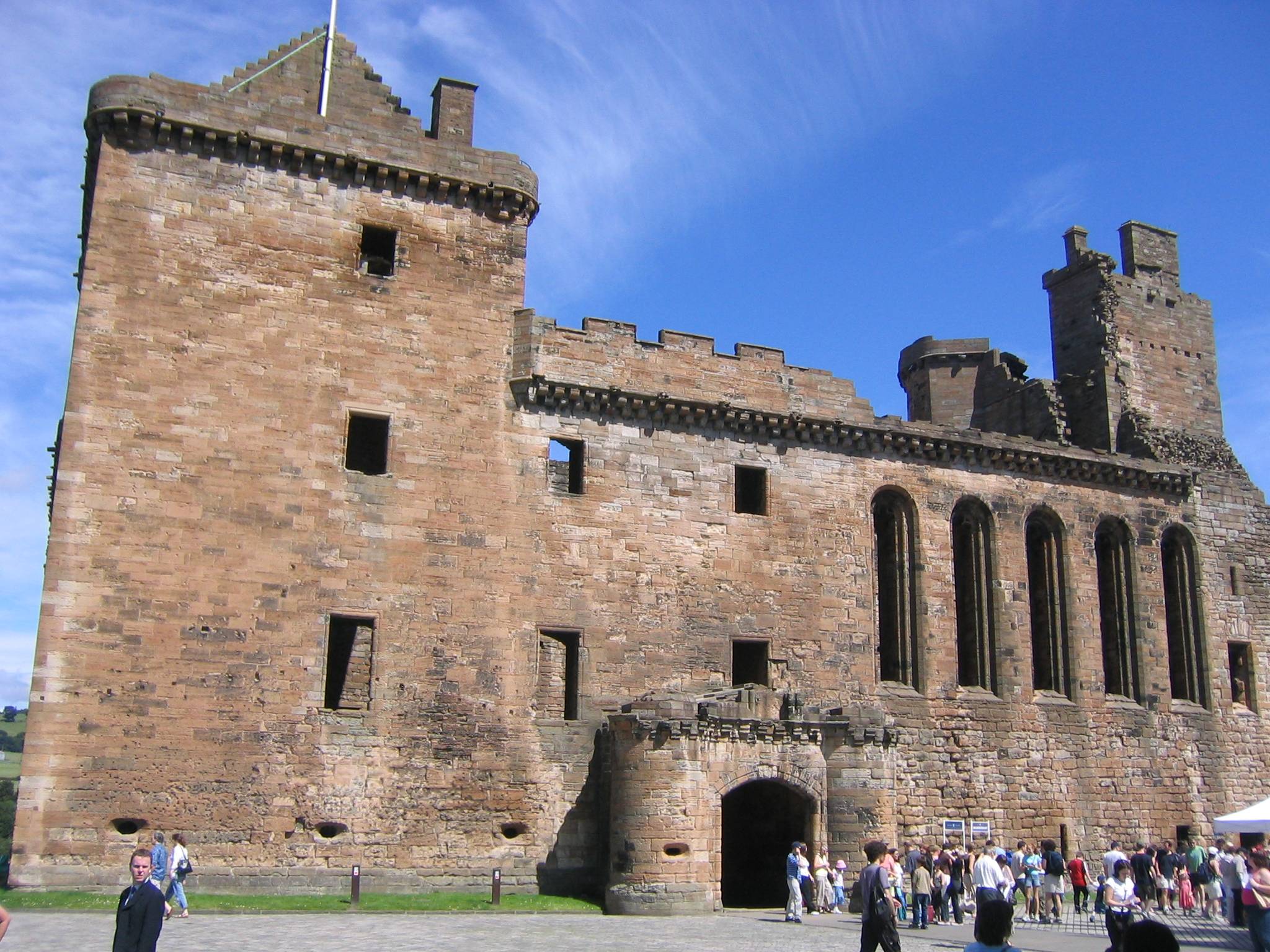
The palace’s discovery as a historical site wasn’t a singular event but a gradual recognition of its significance. It was King James IV who expanded the palace, creating a structure that reflected European Renaissance influences. His son, James V, added further grandeur to the palace, including the ornate fountain in the courtyard.
Linlithgow Palace played host to many important historical figures and events. It was the birthplace of Mary, Queen of Scots, and the setting for royal baptisms and visits by influential leaders. However, its glory days ended with a fire in 1746 when British troops accidentally set the palace ablaze.
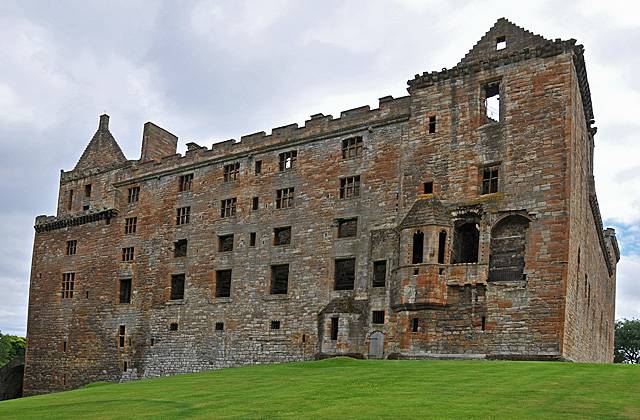
After the fire, the palace fell into disrepair and was not rebuilt. It became a picturesque ruin, celebrated in poetry and art. The palace’s significance lies not only in its architecture but also in its role in Scottish national identity.
Today, Historic Environment Scotland manages the site. They ensure the preservation of this historical gem for future generations. Linlithgow Palace remains a poignant reminder of Scotland’s turbulent history and royal heritage.
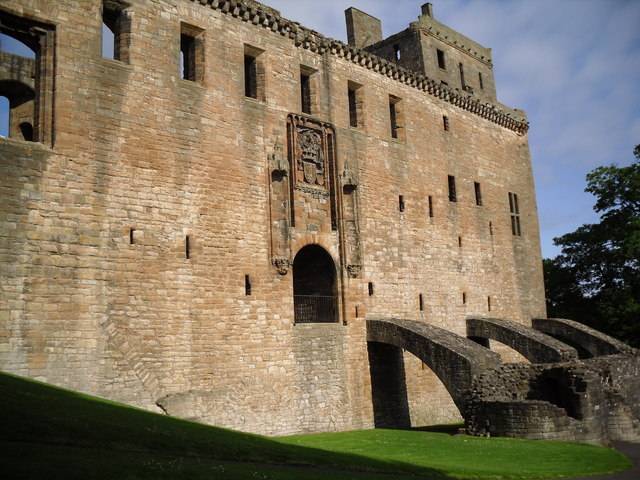
About Linlithgow Palace
Linlithgow Palace’s architecture is a blend of medieval strength and Renaissance elegance. The palace was built with local yellow sandstone, which gives it a warm, golden hue. Its design reflects the transition from fortified castle to comfortable residence.
The palace’s most striking feature is its great hall, once the largest in Scotland. The hall’s hammerbeam roof was an architectural marvel of its time. The palace also boasts a magnificent fountain, reputed to have flowed with wine during royal celebrations.
The four-cornered courtyard layout of the palace is typical of the period. It includes a chapel, a gatehouse, and the King’s and Queen’s apartments. The apartments offer panoramic views of the surrounding countryside and the loch.
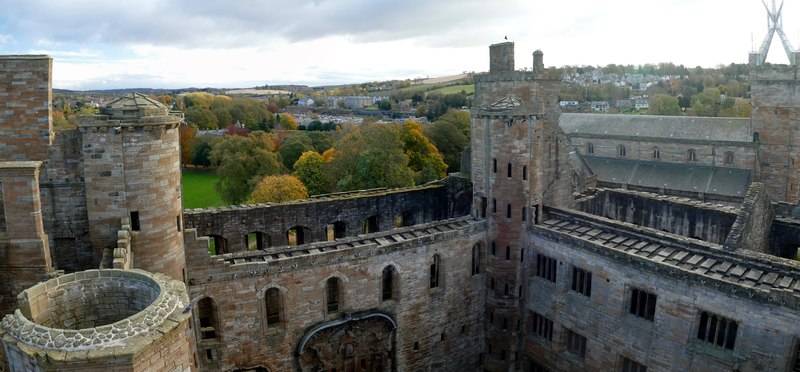
Despite its ruinous state, the palace’s stonework remains a testament to the craftsmanship of the era. The ornate stonework around windows and doorways speaks to the wealth and status of its royal inhabitants.
Linlithgow Palace’s ruins continue to inspire visitors with their beauty and history. The site is a popular location for cultural events, including open-air performances and historical reenactments.
Theories and Interpretations
Over the centuries, Linlithgow Palace has been the subject of various theories and interpretations. Historians have debated its strategic importance and the reasons for its luxurious design.
Some suggest the palace was a statement of royal power, designed to impress subjects and foreign dignitaries. Others believe it was primarily a comfortable retreat for the royal family, away from the political intrigue of Edinburgh.
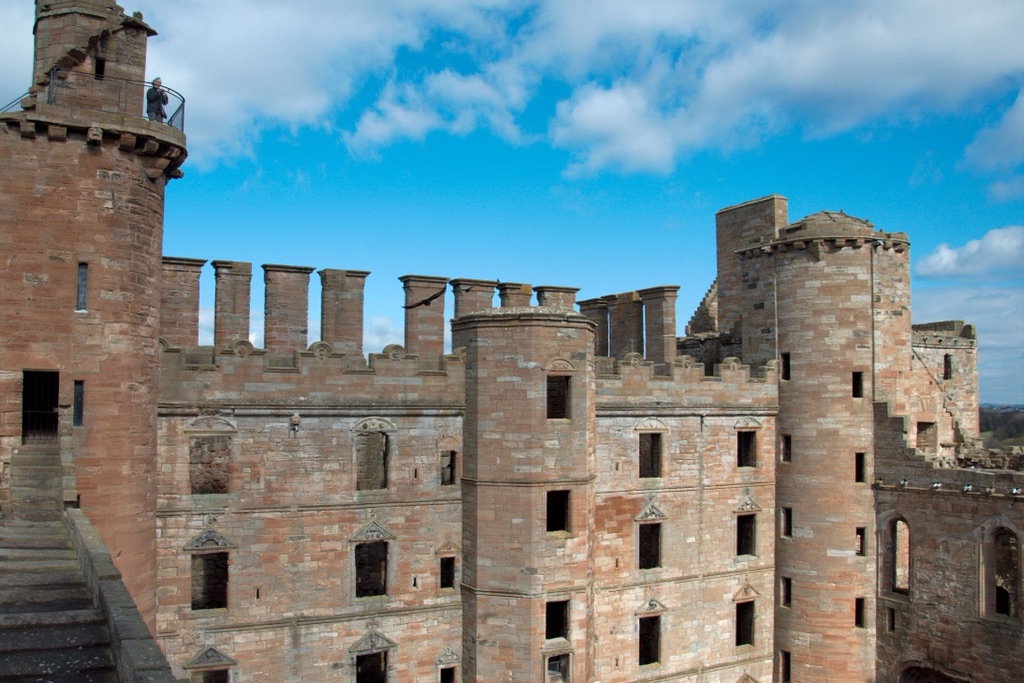
Mysteries surround certain aspects of the palace, such as the purpose of some of its rooms and the symbolism of its carvings. Historians have matched architectural features to historical records to understand the palace’s evolution.
Dating of the palace’s construction phases has been carried out using historical documents. Archaeological studies have provided insights into the materials and techniques used in its construction.
Despite its well-documented history, Linlithgow Palace holds secrets yet to be uncovered. Each interpretation adds to the rich tapestry of its past.
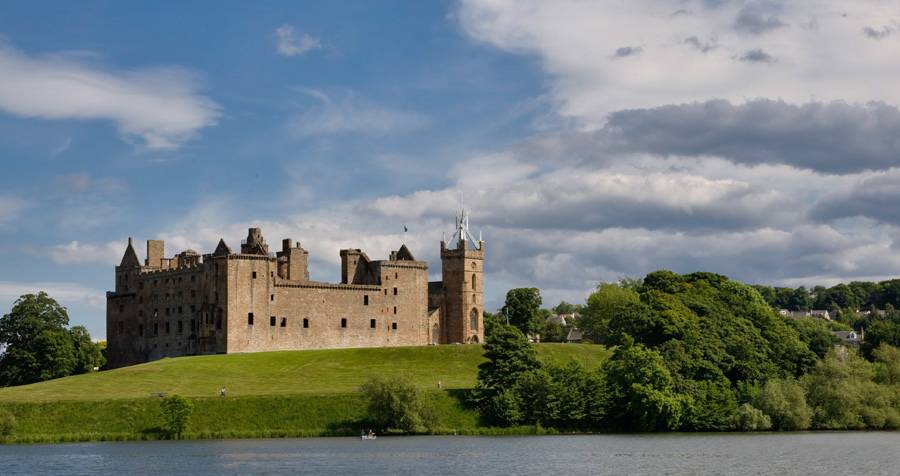
At a glance
Country: Scotland
Civilization: Scottish
Age: 15th-16th century AD
Conclusion and Sources
The information in this article was sourced from reputable institutions and historical records. These sources ensure the accuracy and reliability of the content provided.

